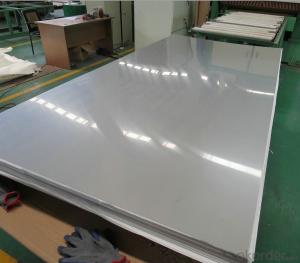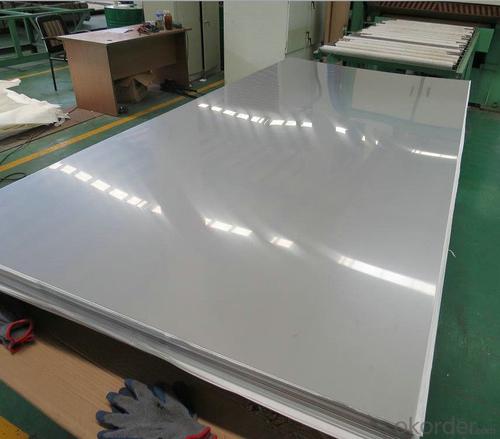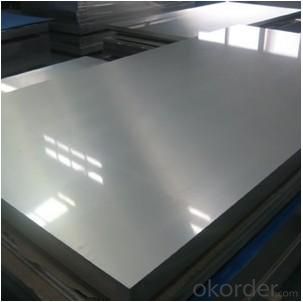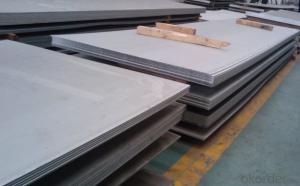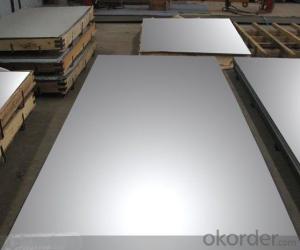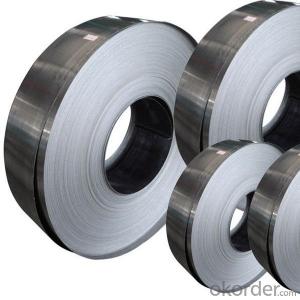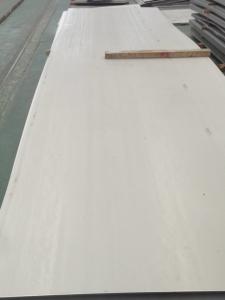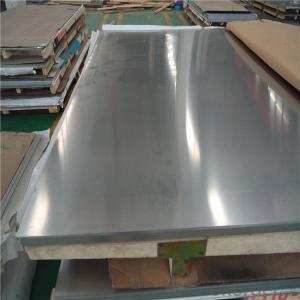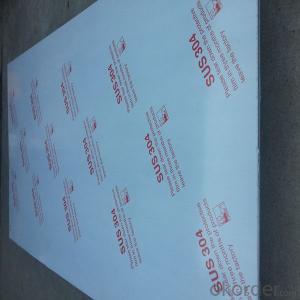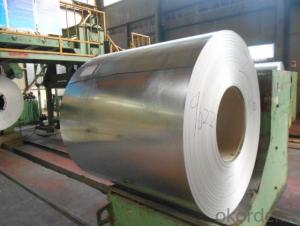TISCO hot rolled stainless steel sheet no.1 310s
- Loading Port:
- Shanghai
- Payment Terms:
- TT OR LC
- Min Order Qty:
- 4 m.t
- Supply Capability:
- 25000 m.t/month
OKorder Service Pledge
OKorder Financial Service
You Might Also Like
Specification
1. Specifications about stainless steel sheet no.1 310s
Commodity | TISCO hot rolled stainless steel sheet no.1 310s |
Grade | 201,202,304,304L,316,316L,310S,309S,321,301,310,410,420,430,904L |
Brand | TISCO ,BAOSTEEL,POSCO,JISCO,LISCO |
Certification | SGS,BV,IQI,TUV,ISO,etc |
Thickness | 0.2mm-150mm |
Width | 1000,1219,1250,1500mm, or as your requirements |
Length | 2000,2438,2500,3000,6000mm, or as your requirements |
Surface | No.1, 2B, BA, 8K Mirror, Hairline,satin, Embossed,brush,No.4,HL,matt,pvc film,laser film. |
Standard | ASTM,AISI,SUS,JIS,EN,DIN,GB,etc |
Delivery time | 5-7 days after confirming the order |
MOQ | 1 Ton |
Advantages | Showing the splendor of your quality, wearresistant as well , strong corrosion resistance and decorative effect, durable and beautiful in good taste. |
2. Chemical Composition about stainless steel sheet no.1 310s
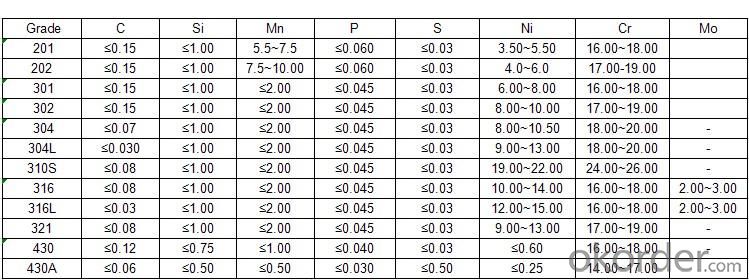
3. Production Flow about stainless steel sheet no.1 310s
Raw materials are sending to hot rolling units for rolling into different sizes
Hot rolled material is annealing in cold; rolled annealing furnace and pickling in acid.
All mill rolls are grinded on precision grinding machine with proper chamfering after first shiftoperation.
All sheets are pickled in different tanks and dried on brush roll machine before dispatched.
These sheets are again annealing and are sent to straighten machine for straightening.
Inspections are done at various stages. Keep proper control overall internal process via rolling,annealin and pickling by our experienced staff
4.Products photos
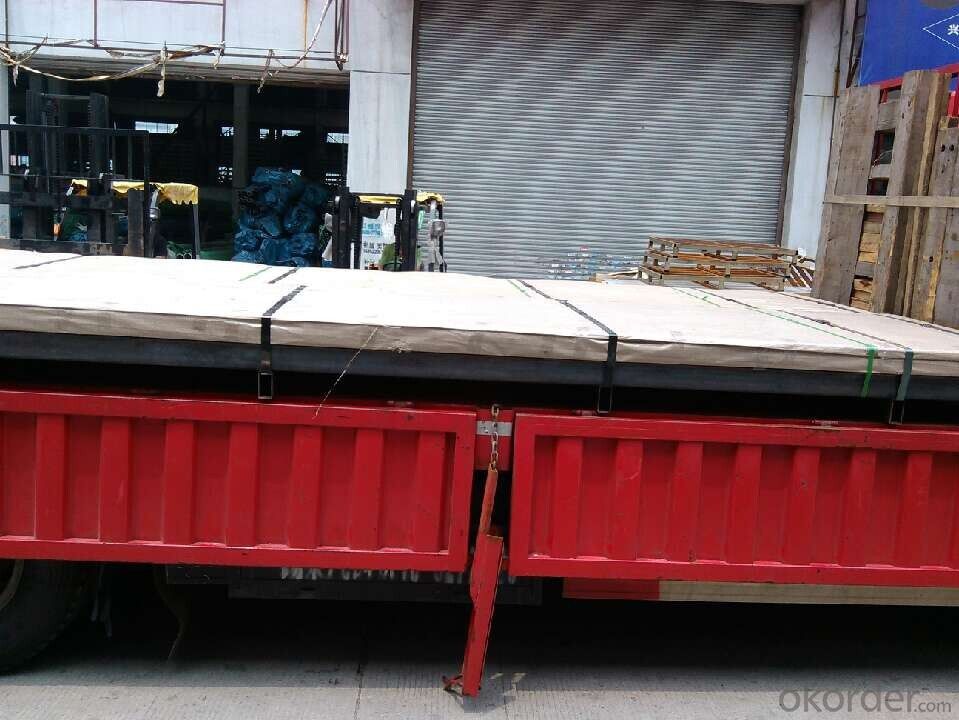

Packaging & Shipping
5.Package-- stainless steel sheet no.1 310s
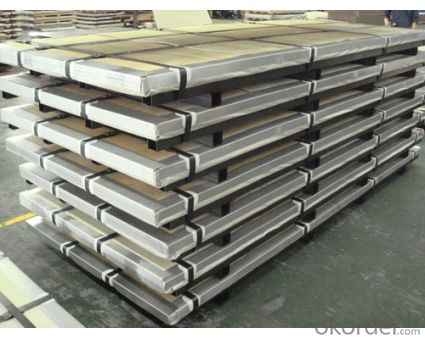
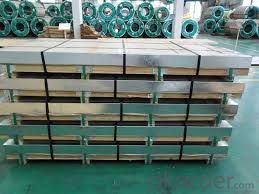
Our Services
7.Manufacturing Process of Stainless Steel Sheet/Plate:
Raw materials are sending to hot rolling units for rolling into different sizes.
→Hot rolled material is annealing in cold rolled annealing furnace and pickling in acid.
→All mill rolls are grinded on precision grinding machine with proper chamfering after first shift operation.
→All sheets are pickled in different tanks and dried on brush roll machine before dispatched.
→These sheets are again annealing and are sent to straighten machine for straightening.
→Inspections are done at various stages. Keep proper control overall internal process via rolling, annealing and pickling by our experienced staff.
Cold rolled,annealing,pickled,slited,straightened,for stainless steel sheet no.1 310s raw material
Stainless steel maintenance:
(1) Regular cleaning and maintenance
(2) Pay attention to prevent the occurrence of the phenomenon of surface scratches
(3) Use soap, weak detergent or warm water to remove surface dust, dirt
(4) In addition to the surface of the binder with alcohol or an organic solvent (ether, benzene)
(5) Use neutral detergent or ammonia solution in addition to surface oil
(6) With 10% nitric acid or abrasive detergent in addition to the surface of the embroider caused by the dirt.
- Q: Can stainless steel sheets be used for solar water heaters?
- Yes, stainless steel sheets can be used for solar water heaters. Stainless steel is a durable and corrosion-resistant material, making it suitable for withstanding the harsh conditions of a solar water heating system. It can effectively absorb and retain heat, making it a good choice for the absorber plate in a solar collector. Stainless steel sheets also have excellent thermal conductivity, allowing for efficient heat transfer to the water. Additionally, stainless steel is a sustainable and environmentally friendly choice, as it is recyclable and has a long lifespan.
- Q: What are the benefits of using textured stainless steel sheets in decorative lighting fixtures?
- Using textured stainless steel sheets in decorative lighting fixtures offers several advantages. To begin with, these sheets bring a unique and visually appealing element to the fixture. The texture adds depth and dimension, making it a standout feature that captures attention in any space. Whether it's a hammered, brushed, or embossed texture, it adds elegance and sophistication to the overall design. Moreover, stainless steel is highly durable and long-lasting. It resists corrosion, rust, and damage caused by moisture or humidity, making it ideal for lighting fixtures, especially in outdoor or high-moisture environments. The textured surface also helps conceal any potential scratches or marks that may occur over time, ensuring a consistently attractive appearance. Additionally, stainless steel is easy to clean and maintain. The smooth surface of the textured sheets allows for effortless removal of dirt, fingerprints, and smudges, keeping the lighting fixture looking polished and clean. Furthermore, stainless steel boasts excellent light reflectivity properties. The textured surface enhances the dispersion of light, creating captivating patterns and shadows. This contributes to a unique ambiance in the surrounding area and produces visually stunning effects. Lastly, stainless steel is a sustainable and eco-friendly material. It is 100% recyclable, making it an environmentally responsible choice for lighting fixtures. By utilizing textured stainless steel sheets, we can help reduce our carbon footprint and contribute to a greener future. In conclusion, the numerous benefits of using textured stainless steel sheets in decorative lighting fixtures include adding a visually appealing element, durability and longevity, ease of cleaning and maintenance, excellent light reflectivity properties, and environmental friendliness. These advantages make textured stainless steel sheets an excellent choice for creating stunning and sustainable lighting fixtures.
- Q: Can stainless steel sheets be bent or formed into different shapes?
- Indeed, it is possible to bend or shape stainless steel sheets into various forms. This incredibly versatile material, stainless steel, can undergo a multitude of processes, including bending, rolling, and forming, enabling the creation of an extensive array of shapes and structures. The capacity to bend stainless steel sheets renders it highly suitable for implementation in industries such as architecture, automotive, and manufacturing. Furthermore, the exceptional corrosion resistance properties of stainless steel remain intact even after the bending procedure, further solidifying its status as a resilient and enduring material option for diverse applications.
- Q: What are the common sizes of stainless steel sheets?
- The sizes of stainless steel sheets can vary depending on the industry and application. However, there are standard sizes readily available in the market. For example, stainless steel sheets usually have thicknesses ranging from 0.4mm to 3.0mm. The most commonly found widths are 1000mm, 1219mm, and 1500mm, while the most frequently seen lengths are 2000mm, 2438mm, and 3000mm. These dimensions are commonly known as 4x8 (4 feet by 8 feet), as they are the standard size for stainless steel sheets used in construction and fabrication projects of various kinds. It is important to mention that stainless steel sheets can also be custom-cut to precise dimensions according to the requirements of a specific project. This allows for greater flexibility and ensures that the sheets fit perfectly for their intended application.
- Q: What type of stainless steel plate made by imported vibrating disk?
- Jing Xin sharp vibration disk equipment is still very good, is a good choice. Kunshan Jing Xin Rui vibration disk equipment factory is a professional manufacturer of non-standard vibrating disk enterprises. Main vibrating disk, linear vibrator, control box and so on, the products are widely used in light industry, machinery, electronics, electrical appliances, hardware, plastics, toys, medicine, food and other industries.
- Q: What are the specifications of stainless steel plates? Are they the same width?
- Generally look at the thickness of 0.3-3.0mm, width of 1000/1219/1500. Thickness of 3 or more, with 1240/1250/1500/1800/2000 width. It can be cut as required.... So the purchase is still more flexible.
- Q: What is the width range available for stainless steel sheets?
- The width range available for stainless steel sheets can vary depending on the supplier, but it typically ranges from 36 inches to 72 inches.
- Q: How do you determine the best thickness of stainless steel sheet for a specific application?
- To determine the best thickness of stainless steel sheet for a specific application, several factors need to be considered. These factors include the required strength, durability, and corrosion resistance for the application, as well as any weight or cost limitations. It is also crucial to analyze the mechanical and chemical properties of the stainless steel and evaluate its compatibility with the intended environment and potential stress factors. Engineering calculations, industry standards, and consultation with material experts or engineers can help in making an informed decision about the appropriate thickness for the stainless steel sheet.
- Q: What does 8K stainless steel mean?
- The literal definition of 8K: the composition of the alloy corrosion resistance of stainless steel white just depends on its (Cr, Ni, Ti, Si, Mn) and internal organizational structure, which play a decisive role is chromium, it can form a passivation film on the surface of the steel, the metal isolation does not produce oxidation and enhance the ability of corrosion resistance of steel plate. In 8K, the "8" refers to the proportion of ingredients containing alloy (304 stainless steel mainly refers to the content of Ni element), "K" refers to after polishing after the reflectance grade (grade K grade mirror). 8K mirror, that is, chrome nickel alloy steel reflects the mirror level.
- Q: Can stainless steel sheets be polished?
- Yes, stainless steel sheets can be polished. Polishing stainless steel sheets helps in removing scratches, stains, and improving the overall appearance of the metal surface.
Send your message to us
TISCO hot rolled stainless steel sheet no.1 310s
- Loading Port:
- Shanghai
- Payment Terms:
- TT OR LC
- Min Order Qty:
- 4 m.t
- Supply Capability:
- 25000 m.t/month
OKorder Service Pledge
OKorder Financial Service
Similar products
Hot products
Hot Searches
Related keywords
